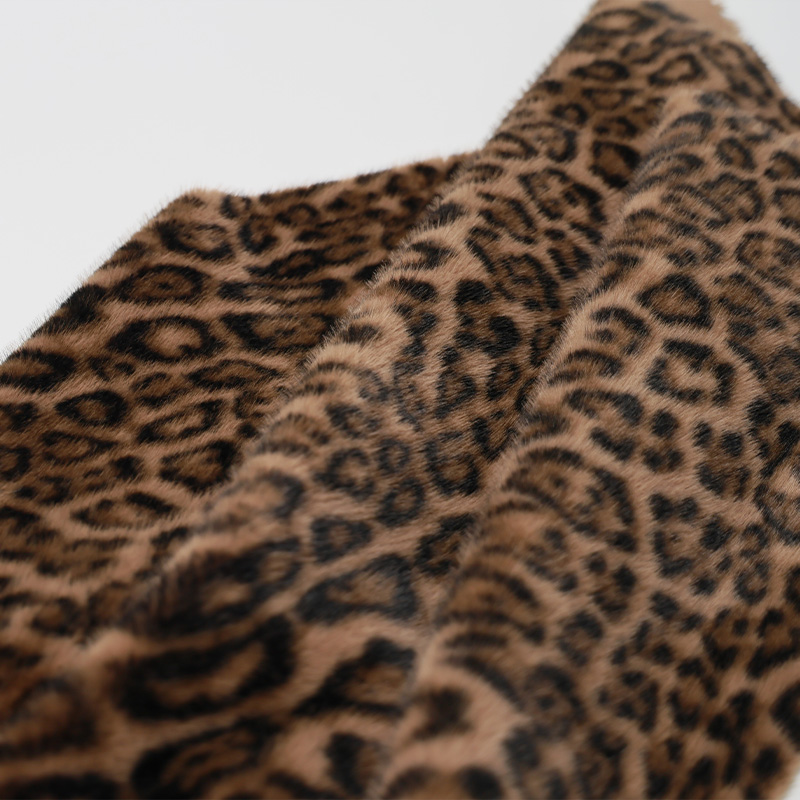











The fashion industry is renowned for its constant evolution, with trends and materials continually shifting to meet consumer demands. One such material that has seen a surge in popularity is faux rabbit fur. This synthetic alternative to real rabbit fur offers a unique aesthetic while addressing ethical concerns related to animal welfare. However, like any product, faux rabbit fur has its own set of benefits and drawbacks. This industry insights article aims to evaluate these aspects, providing a balanced perspective on the use of faux rabbit fur in fashion.

Benefits of Faux Rabbit Fur
Ethical Alternative: The primary benefit of faux rabbit fur is its ethical appeal. The production of real rabbit fur often involves the harsh treatment of animals, including confinement, and sometimes inhumane killing methods. By opting for faux rabbit fur, consumers can support a more humane approach to fashion, aligning their purchases with their ethical values.
Cost-Effectiveness: Faux rabbit fur is generally more affordable than real rabbit fur. The manufacturing process for synthetic fur is more mechanized, allowing for economies of scale and lower production costs. This price advantage makes faux rabbit fur accessible to a wider audience, enabling more people to enjoy the look and feel of rabbit fur without the high price tag.
Versatility and Design: Faux rabbit fur offers a high degree of versatility in terms of design and styling. It can be dyed in various colors, textures, and lengths, allowing for endless possibilities in fashion design. This adaptability makes faux rabbit fur a popular choice for both casual and formal wear, as well as for accessories like scarves, hats, and gloves.
Ease of Maintenance: Unlike real rabbit fur, which requires specialized care and handling, faux rabbit fur is easier to maintain. It can be cleaned using standard washing methods, and it retains its shape and texture well over time. This ease of care extends the lifespan of the product, making it a practical choice for consumers.
Drawbacks of Faux Rabbit Fur
Quality and Authenticity: While faux rabbit fur has improved significantly in terms of quality and realism, it can still fall short when compared to real rabbit fur. Synthetic fibers may lack the natural softness and warmth of real fur, and they may not feel as authentic to the touch. This can be a drawback for consumers who prioritize the sensory experience of their clothing.
Durability: Although faux rabbit fur is relatively durable, it may not withstand the same level of wear and tear as real fur. Synthetic fibers can shed or pill over time, especially with heavy use. This can detract from the appearance of the product and necessitate more frequent replacements.
Allergenic Properties: Some individuals may be sensitive to the materials used in faux rabbit fur. Synthetic fibers can harbor dust mites, allergens, and other irritants, which can trigger allergic reactions in susceptible individuals. This is an important consideration for consumers with allergies or skin sensitivities.
Environmental Impact: While faux rabbit fur avoids the ethical issues associated with real fur, it still has an environmental footprint. The production of synthetic fibers involves chemicals and energy-intensive processes, which can have negative effects on the environment. Additionally, the disposal of faux fur products contributes to textile waste, a growing problem in the fashion industry.
In conclusion, faux rabbit fur offers a range of benefits, including ethical appeal, cost-effectiveness, versatility, and ease of maintenance. However, it also presents some drawbacks, such as quality concerns, durability issues, allergenic properties, and environmental impact. As the fashion industry continues to evolve, consumers will need to weigh these factors carefully when making purchasing decisions. Ultimately, the choice between faux and real rabbit fur will depend on individual values, priorities, and preferences in the dynamic world of fashion.